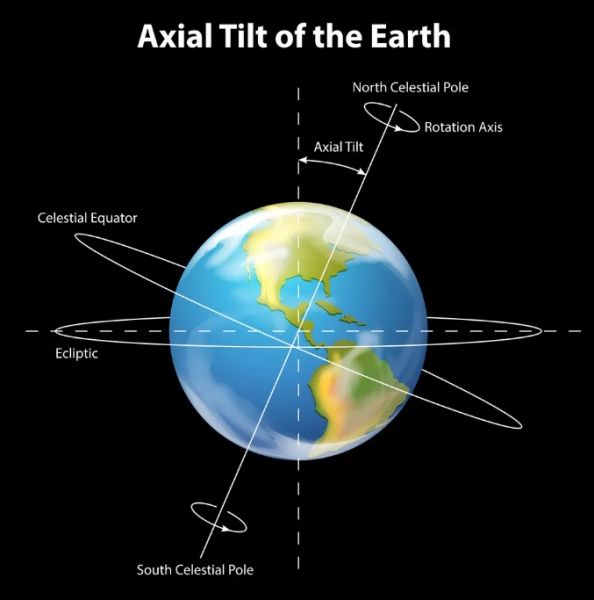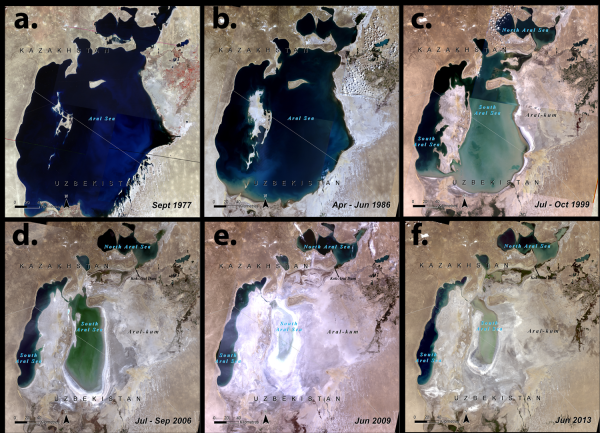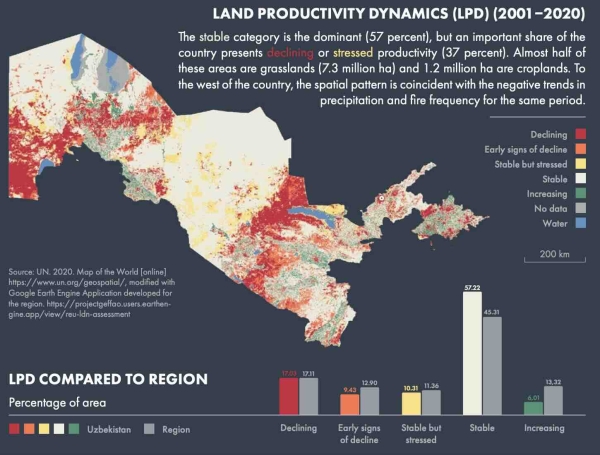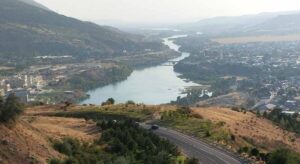Uzbekistan, a land of ancient history and enduring traditions, now faces an unprecedented challenge: safeguarding its environment for the next millennium. A recent study by B.A. Kamalov, G.F. Ishakov, and Ch.T. Sherdanov from Namangan State University explores the forces shaping Uzbekistan’s climate future. Their findings reveal a striking balance between cosmic stability and ecological fragility. While astronomical factors promise a steady climate for the next thousand years, the consequences of human-driven ecological disasters—such as the drying of the Aral Sea—threaten to drastically alter the landscape and the livelihoods it supports.
A Predictable Climate: The Stars Align for Stability
The report provides a rare reassurance in an era of climate uncertainty: Uzbekistan’s climate will remain largely stable over the next thousand years, thanks to the slow and predictable nature of astronomical forces.

-
Earth’s Orbital Eccentricity:
The shape of Earth’s orbit, which fluctuates between near-circular and slightly elliptical every 100,000 years, is a key driver of global climate cycles. However, the report notes that the current eccentricity, which ranges between 0.007 and 0.066, will change by just 0.001 in the next thousand years—too minor to significantly affect the climate.“A 0.001 change in the Earth’s orbital eccentricity takes approximately 1,695 years,” the researchers explain, emphasizing the negligible impact of this factor over a millennium.
-
Axial Tilt:
The tilt of the Earth’s axis, which determines the intensity of the seasons, oscillates between 22°0.4′ and 24°34′ over a 41,000-year cycle. In the next thousand years, this tilt will change by only 0.06°, leaving seasonal patterns intact. -
Precession of the Earth’s Axis:
The gradual wobble of the Earth’s axis, known as precession, influences the timing of perihelion (when the Earth is closest to the sun). Currently, perihelion occurs in early January, moderating winters and making summers slightly milder. Over the next thousand years, this date will shift by just 17 days, moving from January 5 to January 22.“The timing of perihelion and aphelion significantly influences seasonal temperatures,” the authors note, “but this change is too gradual to disrupt Uzbekistan’s climate in the foreseeable future.”
The Aral Sea Crisis: A Growing Ecological Catastrophe

While the stars offer a steady climate, the situation on the ground tells a different story. The drying of the Aral Sea, once a vast body of water spanning over 68,000 square kilometers, has left behind a desolate wasteland of salt and sand. This ecological disaster is already having a profound impact on Uzbekistan’s environment and beyond.
-
Salt and Sand Dispersal:
The exposed seabed is now a major source of airborne particles. Each year, an estimated 12 billion tons of salt and sand are lifted into the atmosphere by winds. Strong gusts can carry these particles across thousands of kilometers, contaminating soil, water, and air as far as the mountains. -
Impact on Precipitation:
Regions like Tashkent are experiencing noticeable declines in rainfall, a phenomenon attributed to atmospheric contamination by salt particles. -
Water Scarcity:
In Namangan, river flows are shrinking, reducing water availability for agriculture and domestic use. This trend is expected to worsen as desertification accelerates. -
Desertification:
Winds spreading particles from the Aral Sea are transforming fertile lands into barren deserts. The report warns of accelerated desertification across Central Asia, with severe consequences for agriculture and biodiversity.
Desertification by the Numbers

The study provides detailed data on the alarming rate of desertification:
- Daily Dispersal: Winds carry up to 100,000 tons of salt and sand daily from the dried Aral Sea basin.
- Land Contamination: Fertile agricultural areas are increasingly becoming unproductive due to the spread of saline particles.
- Regional Impact: This process is reducing crop yields, threatening food security, and creating a cascade of environmental and economic challenges.
“The ecological disaster caused by the drying of the Aral Sea will continue to affect the climate and environment of Uzbekistan and neighboring regions for centuries,” the authors state.
A Fragile Balance: Stability Meets Crisis
The juxtaposition of astronomical stability and ecological instability is striking. While the predictable nature of cosmic forces ensures that Uzbekistan’s climate will not face major disruptions, the human impact on the environment is already reshaping the landscape. The Aral Sea crisis serves as a cautionary tale of how ecological mismanagement can have far-reaching consequences.
The drying of the sea has not only transformed the local environment but has also disrupted weather patterns, water availability, and soil quality across the region. Without intervention, the ecological and economic effects will continue to ripple outward.
A Call to Action: Protecting Uzbekistan’s Future
This study is both a reassurance and a warning. It highlights the stability offered by cosmic forces but underscores the urgent need to address human-driven environmental challenges. The fate of Uzbekistan’s environment over the next thousand years will not be dictated by the stars—it will be determined by the actions taken today.
To mitigate desertification and restore balance, Uzbekistan must:
- Invest in Land Restoration: Planting vegetation on the dried Aral Sea bed could help reduce wind erosion and particle dispersal.
- Promote Water Conservation: Efficient irrigation systems and sustainable water management practices are critical to address shrinking rivers and declining rainfall.
- Collaborate Internationally: The Aral Sea crisis affects the entire Central Asian region, requiring a coordinated response among neighboring countries.
“The choices we make now will define Uzbekistan’s environmental legacy for the next thousand years,” the study concludes.
As Uzbekistan looks to the future, its greatest challenge lies not in the stars but in the resilience and resolve of its people to protect their land, their water, and their way of life.




